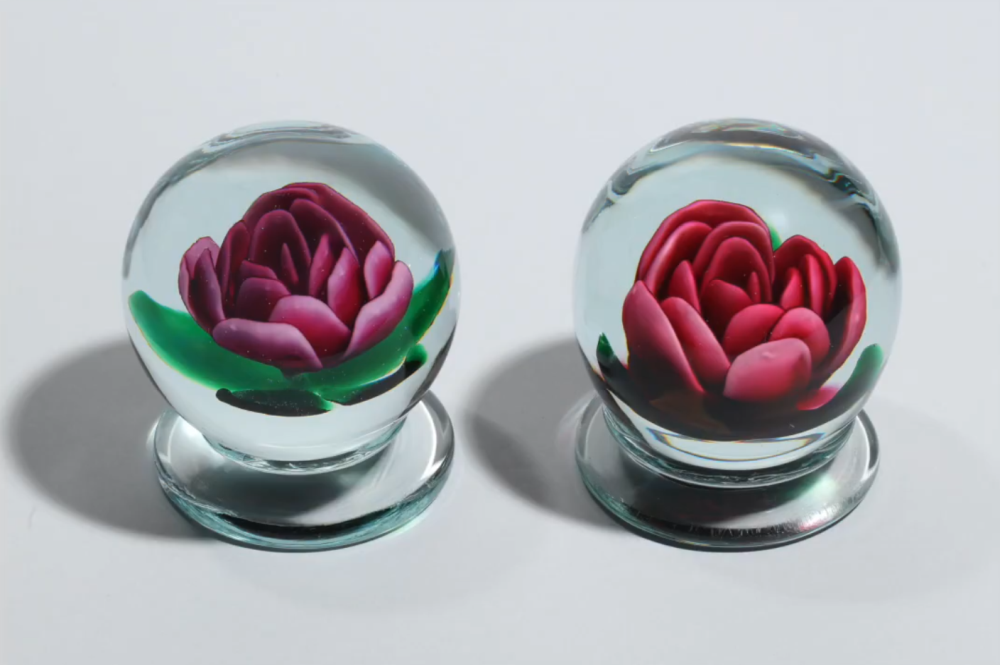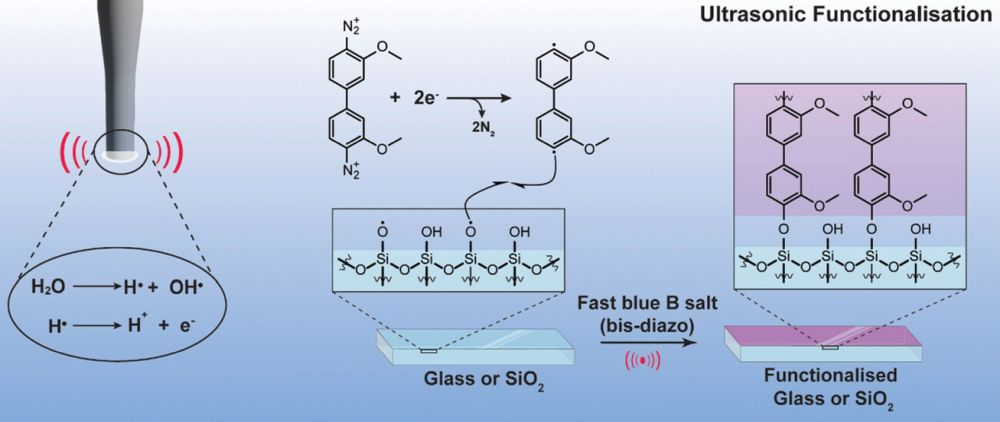New papers that have been accepted for publication in the International Journal of Applied Glass Science are posted to “Early View” on the Wiley website and can be read even before the issue is printed. Below are summaries of selected papers currently available via Early View.
All members of The American Ceramic Society receive free online access to IJAGS. To access any of the ACerS journals, or to become a member, visit www.ceramics.org.
 Environmental scanning electron micrographs of an as-corroded and dried sulfophosphate glass after 24-h pure water (20°C) exposure. Credit: IJAGS; Wiley.
|
Chemical Stability of ZnO-Na2O-SO3-P2O5 Glasses Sergey Sirotkin, Robert Meszaros and Lothar Wondraczek This research team from Germany’s University of Erlangen-Nuremberg report the weight loss, ion release rates and modifications of surface topology as a function of time, temperature and pH value of depolymerized sulfophosphate (ZnO-Na2O-SO3-P2O5) glasses in aqueous solution. The team reports that observations seem consistent with a previously developed structural model of chemical heterogeneity, where sodium and zinc cations cluster selectively in the vicinity of sulfate and phosphate anions, respectively. |
|
Convergent Pad Polishing of Amorphous Silica This Lawrence Livermore National Laboratory research team used convergent pad polishing and a ceria slurry on polyurethane pads to polish fused (amorphous) silica workpieces. The team systematically controlled polishing parameters to prevent nonuniform material removal: moment force; viscoelastic lap relaxation; kinematics; pad wear; and workpiece bending. The team reports removal uniformity of 1.0 micrometer over the surface after 83 micrometers of material removal and a convergence of 0.18 ± 0.04-micrometer peak-to-valley flatness on a 100-millimeter workpiece. |
|
|
Photoinduced Fluidity and Viscoelasticity in Chalcogenide Glasses These French researchers used relaxation-recovery to characterize delayed elasticity of chalcogenide glasses under irradiation conditions and to investigate the influence of the photon irradiation on viscoelastic behavior. They report that thermally activated and photoinduced processes are decoupled and that viscoplastic deformation under irradiation is the sum of thermally activated and photoinduced processes. In particular, as soon as irradiation ceases, chalcogenide glasses behave as if they never had been irradiated. |
|
|
Effect of Alumina Source on the Rate of Melting Demonstrated with Nuclear Waste Glass Batch These researchers from Pacific Northwest National Laboratory compared the melting behaviors of three glass batches formulated to vitrify high-alumina high-level waste and found that a slowly dissolving refractory component caused excessive foaming. They report that faster-melting gibbsite (Al(OH)3) or boehmite (AlO(OH)) batches produced substantially less foaming than a corundum (Al2O3) batch, because the low viscosity of the latter batch caused the open pores to close prematurely to trap the gases and expand the foam, which explains the slow melting rate of a corundum batch. |
|
|
Raman Mapping of the Indentation-Induced Densification of a Soda-Lime-Silicate Glass This research team from France used micro-Raman spectroscopy to investigate top surface and cross section residual imprints of Vickers indentation-induced densification in a soda-lime-silica window glass. The team reports that sample preparation of the in-depth densification does not alter the results and that maximum densification ratio measured is about 3.8 percent, which is 60 percent of the maximum densification measured after high-pressure hydrostatic loading. |
|
 Damage evolution features as a function of scratching speed (v) at constant applied normal loads (P) of 5 N 0.1 mm/s. The features include ring crack (rc), plastic grooving (g), microcracking (mc), and formation of microwear debris (mwd). The scratch was made from left to right. Credit: IJAGS; Wiley. |
Novel Combined Scratch and Nanoindentation Experiments on Soda-Lime-Silica Glass These researchers from India conducted a series of combined nanoindentation and single-pass scratch experiments on a soda-lime-silica glass as a function of various normal loads and scratch speeds. They report that the nanohardness and Young’s modulus at the local microstructural length scale inside the scratch groove decreased dramatically depending on the combination of load and scratching speed and that tribological properties, severity and spatial density of damage evolution were sensitive to the normal loads, scratching speeds and tensile stresses. |
|
Micropillar Testing of Amorphous Silica This French research team assessed the potential of micropillar compression testing for the investigation of micromechanical properties of amorphous silica, calculated the response of amorphous silica micropillars as predicted by finite-element analysis and compared the results with preliminary microcompression tests. They report that amorphous silica is much more amenable than some metals to microcompression experiments because of a comparatively high ratio between yield stress and elastic modulus and that simulations are consistent with the experimental results, except that full agreement must allow for nonlinear response of amorphous silica in the elastic regime. |
|
|
Finite-Element Calculation of Refractive Index in Optical Glass Undergoing Viscous Relaxation and Analysis of the Effects of Cooling Rate and Material Properties Su, of Ohio State University, and Yi, of Beihang University of Aeronautics and Astronautics, used the Tool-Narayanaswamy-Moynihan model to predict refractive index change by cooling introduced to two low-glass-transition-temperature optical glasses. They report that the finite-element method is capable of predicting refractive index of optical glass undergoing viscous relaxation, that is, a higher cooling rate leads to a lower refractive index and a larger variation of refractive index in glass optics. |
Author
Eileen De Guire
CTT Categories
- Basic Science
- Glass
- Modeling & Simulation
- Nanomaterials








